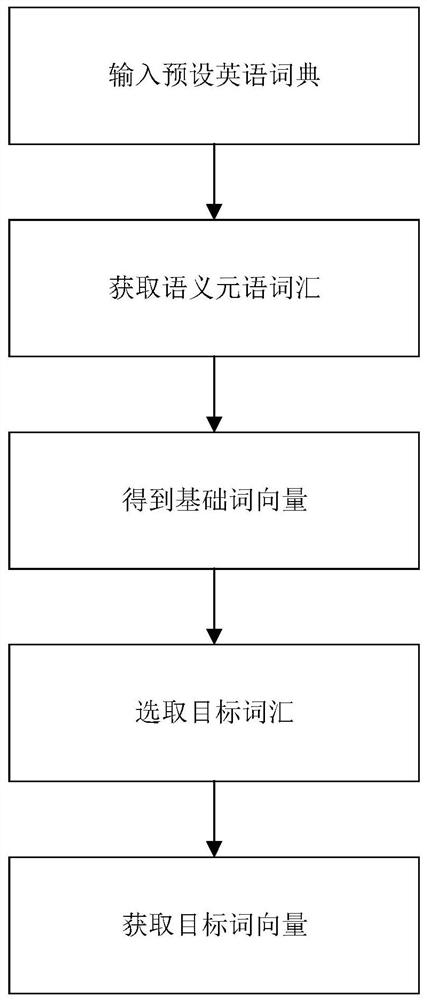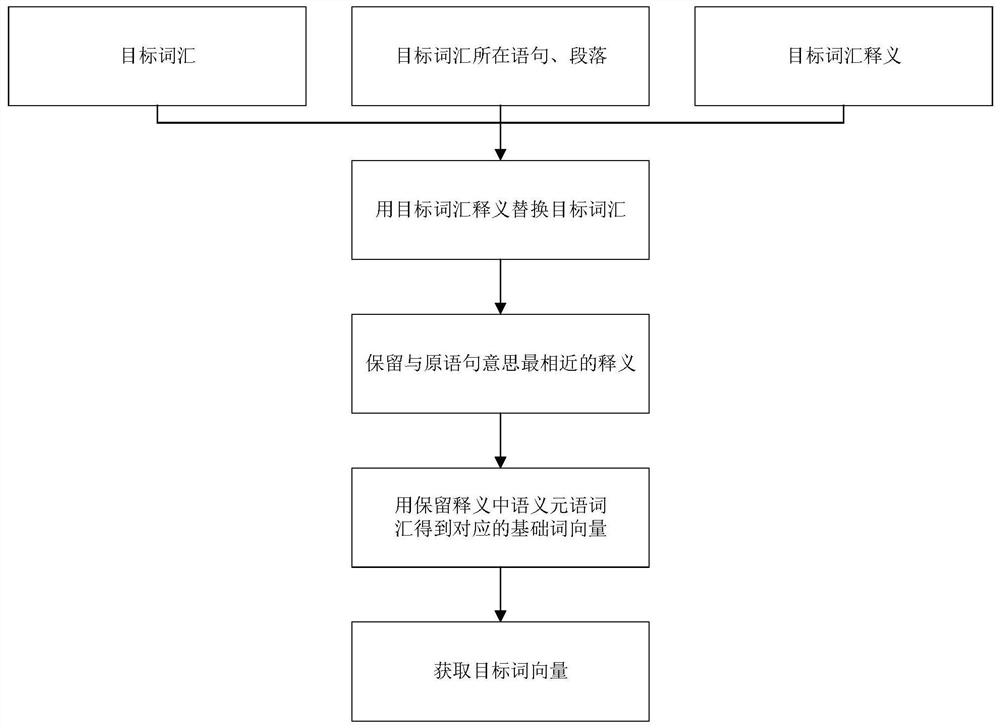A word vector representation learning method and system based on semantic metalanguage
A word vector and metalanguage technology, applied in semantic analysis, natural language data processing, instruments, etc., can solve problems such as low precision and low usability
- Summary
- Abstract
- Description
- Claims
- Application Information
AI Technical Summary
Problems solved by technology
Method used
Image
Examples
Embodiment Construction
[0021] In order to have a clearer understanding of the technical features, purposes and effects of the present invention, the specific implementation manners of the present invention will now be described in detail with reference to the accompanying drawings.
[0022] A word vector representation learning method based on semantic metalanguage, such as figure 1 shown, including the following three steps:
[0023] Step 1: Input the preset English dictionary to obtain the semantic metalanguage vocabulary corresponding to all the words in the preset English dictionary;
[0024] Step 2: Obtain the corresponding basic word vector (such as word2vec, etc.) according to the obtained semantic metalanguage vocabulary;
[0025] Step 3: Select the target vocabulary in the preset English dictionary, and obtain the target word vector of the target vocabulary according to the definition of the target vocabulary in the original sentence or paragraph and the basic word vector.
[0026] In the...
PUM
 Login to View More
Login to View More Abstract
Description
Claims
Application Information
 Login to View More
Login to View More - R&D
- Intellectual Property
- Life Sciences
- Materials
- Tech Scout
- Unparalleled Data Quality
- Higher Quality Content
- 60% Fewer Hallucinations
Browse by: Latest US Patents, China's latest patents, Technical Efficacy Thesaurus, Application Domain, Technology Topic, Popular Technical Reports.
© 2025 PatSnap. All rights reserved.Legal|Privacy policy|Modern Slavery Act Transparency Statement|Sitemap|About US| Contact US: help@patsnap.com


